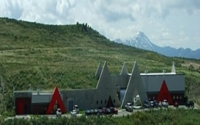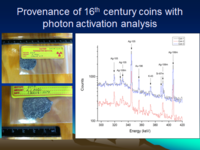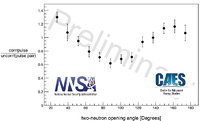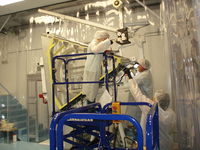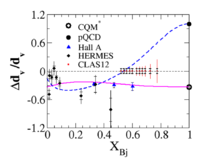PhysWebPageBannerContent
Physics Department Mission /overview
Our mission: The mission of the Idaho State University Department of Physics is to pursue cutting edge research in both fundamental and applied physics, and train of the next generation of physical scientists, technicians, and educators.
- Overview
The Idaho State University Department of Physics is actively engaged in a variety of cutting edge research pursuits, all of which focus on the use of experimental nuclear physics techniques to address problems in both fundamental and applied science. Major efforts include:
- nuclear non-proliferation and homeland security
- radiation effects in materials and devices
- nuclear reactor fuel cycle physics
- fundamental nuclear and particle physics.
The Idaho Accelerator Center (IAC)
The Center
The Idaho Accelerator Center (IAC) is a research facility operated by Idaho State University located in southeast Idaho. It provides opportunities for scientists and engineers from the University, the private sector, and national laboratories to utilize electron accelerators. It serves as a principal investigating conduit for nuclear physics applications research and development in materials science, biology, homeland, and national security. Student's from the Physics department are involved in all aspects of the center, from operating electron accelerators to performing experiments in nuclear physics applications. For more information go to iac.isu.edu.
Photon Activation Analysis
Photon Activation Analysis is a "non-destructive" process of quantifying nuclear isotope concentrations by exciting a tiny fraction of the nuclei in a material of interest interest using photons in the MeV range. The photons used to irradiate these materials of interest are produced when electrons accelerated by the Idaho Accelerator Center's Linacs are impinged upon a radiator target, typically Tungsten, and undergo a bremsstrahlung interaction. Stable nuclei can become unstable if a photon "knocks out" either a proton or neutron. This unstable nucleus can emitt radiation in the form photons as part of its decay process. A fingerprint unique to the specific nuclear isotope is constructed based on the energy of the observed photon and the half life of the isotope. Below is an example where these isotope signatures are used to determine the provenance of Gold coins.
2N Correlations
The figure illustrates the opening angular dependence between two neutrons emitted from fission fragments ejected by U-238 that is induced by bremsstrahlung photons produced by a 10 MeV electron impinging a 2 m thick Tungsten radiator at the Idaho Accelerator Center. Neutrons were defined as being in coincidence if they were detected within 150 nanoseconds of each other. This detection rate was normalized using a method that relies on a simultaneous measurement of the uncorrelated neutron emission rate. Neutrons are expected to be isotropically emitted in the rest frame of the fission fragments. An angular dependence, however, is possible as a result of a relativistic "boost" when observing the neutrons in the lab frame. This work was supported by both the NNSA and the CAES.
Se PAA
The Center for Advanced Energy Studies (CAES) is a research and education consortium committed to conducting cutting-edge energy research, educating the next generation of scientists and engineers, and partnering with industry to advance competitiveness. Nuclear science and advanced materials science are two areas of CAES’ research focus that ISU's physics department can contribute to.
Photon activation analysis and an experiment to measure the angular dependence of neurons from photo-fission are two areas that CAES has provided graduate student support. An example of measuring concentrations of different Selenium nuclear isotopes in materials is shown.
JLab Projects
Detector Construction
The Idaho Accelerator Center and ISU's Department of Physics constructed detector for the Department of Energy's Jefferson Lab facility in Newport New, Virginia. The detectors are wire chambers containing approximately 5,000, 30 micron diameter wires that are used to form gaseous cells which can detect the passage of ionizing particles. The 2 year long project will construct detectors that are about 6 feet high and will eventually be installed at Jefferson Lab in Newport News, Va. The detectors will be part of a larger detector that will be used by a group of more than 100 physicists to perform fundamental nuclear physics measurements.
Nucleon's Fractional Down Quark Polarization
The contributions of a nucleon's constituents, quarks and gluons, to the spin of the nucleon has been a long standing question since the 1980s when it was first observed that quarks contribute less than 40%. The spin physics program at ISU is working to measure the contribution of a nucleon's down quarks to its spin. This is referred to as the down quark fractional polarization. Measurements of this quantity when compared with the standard theoretical description of quark interactions, Quantum Chromodynamics, have yet to indicate a transition from the observed negative values to the predicted positive value of unity. One goal of ISU's spin physics program is to determine the veracity of the theoretical prediction through a series of measurements with the expected precision shown above (CLAS12).
